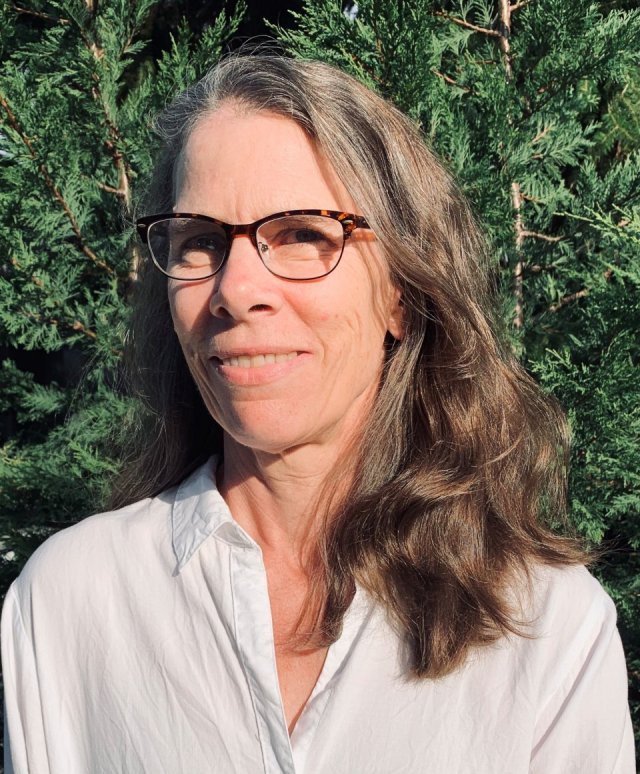Meet EPA Researcher Kim Prestbo

Kim Presto is the Region 10 Superfund and Technology Liaison (STL) for EPA’s Office of Research and Development. Kim joined EPA Region 10 in 2011 as a Remedial Project Manager (RPM) working primarily on the Bunker Hill Superfund Site and federal facilities. After a short stint in geothermal energy after grad school, Kim moved on to environmental consulting where she practiced for many years working with industry and government clients before joining EPA. She still considers her RPM job as the most fun career move to date, allowing her to explore a broad range of interests ranging from contaminated sediment and mine sites to groundwater remediation exit strategies to monitoring remedy effectiveness on migratory waterfowl. She currently sits on the mine-influenced water (MIW) team and Contaminated Sediment Technical Advisory Group (CSTAG) which provide a continuous array of interesting and complicated sites to explore.
When Kim is not at EPA, she travels the world, bikes, and hikes the pacific northwest, usually with husband Eric and sometimes with her two daughters Anna and Claire and new son-in-law Cam. She makes bread for people who need it, and is a volunteer and advocate for Water 1st International. Her last big trip before COVID was to Bangladesh to learn about their work bringing clean water to urban communities in Dhaka. She looks forward to bringing the wealth of ORD expertise and knowledge to our Region 10 sites!
Tell us about your background.
I was raised in Vermont and always dreamed about combining work and travel in some capacity. My first degree was in international studies and included an internship in Liberia working with health care and nutrition. A great experience, but I realized I needed a technical degree if I wanted to get anything done. I’ve always loved field work and completed my B.S. in Geology at the University of Alaska-Fairbanks sandwiched between summers working throughout the state. I completed my M.S. at New Mexico Institute of Mining and Technology with two seasons in Antarctica studying emissions from Mount Erebus volcano. I’ve spent the last 10 years at EPA as an RPM with a primary focus on the Bunker Hill Superfund Site.
When did you first know you wanted to be a scientist?
My first interest in science centered around health and nutrition, but my interest in geology came from a summer job as a camp cook on an Alaskan reconnaissance geology field crew. I quickly learned that I wanted to be in the field and not in the cook tent. My boss said I had to take a least one geology course. And the rest is history.
How does your science matter?
As an RPM, understanding the science and conceptual site models behind our superfund cleanups was key to adapting our investigations and cleanup strategy given an evolving and uncertain set of problems.
What do you like most about your research?
My role now is to collaborate with the researchers and RPMs to optimize both the research and the practical applications necessary to develop the CSM and support the cleanup strategy. Finding that nexus is fun for me.
If you could have dinner with any scientist, past or present, who would it be?
My husband – he’s an expert in mercury atmospheric science but also my favorite dinner companion.

If you weren’t a scientist, what would you be doing?
Probably something where I could travel, work with communities, and further develop my Spanish.
If you could have one superpower, what would it be and why?
The ability to communicate in multiple languages. Communication is key to understanding wherever you are. And it would be fun to be able travel anywhere and speak the language.
Any advice for students considering a career in science?
Do the work in school to understand your topic but also find ways to work in the field throughout your schooling. Allow room to understand how your science fits into the bigger picture.
 What do you think the coolest scientific discovery was and why?
What do you think the coolest scientific discovery was and why?
Alfred Wegener who proposed the concept of continental drift that was initially rejected but was the basis for today’s plate tectonics. He had the courage to think outside the box in the face of rejection.
What do you think is our biggest scientific challenge in the next 20/50/100 years?
Water – protecting, managing, and sharing it. This will be not only a scientific challenge, but a political, economic, and cultural challenge.
Whose work in your scientific field are you most impressed by?
Marla Smith-Nelson, Founder and Executive Director of Water First International. An engineer with a strong background in water and sanitation, she saw a need and developed a concept for delivery to the world’s poorest communities. Her approach is practical and streamlined and each project is set up to be sustainable by and for the community.
You’re stranded on a desert island with a community of other survivors – what is your job?
I want to be on the field reconnaissance team, scouting out and mapping the island.
Editor's Note: The opinions expressed herein are those of the researcher alone. EPA does not endorse the opinions or positions expressed.
